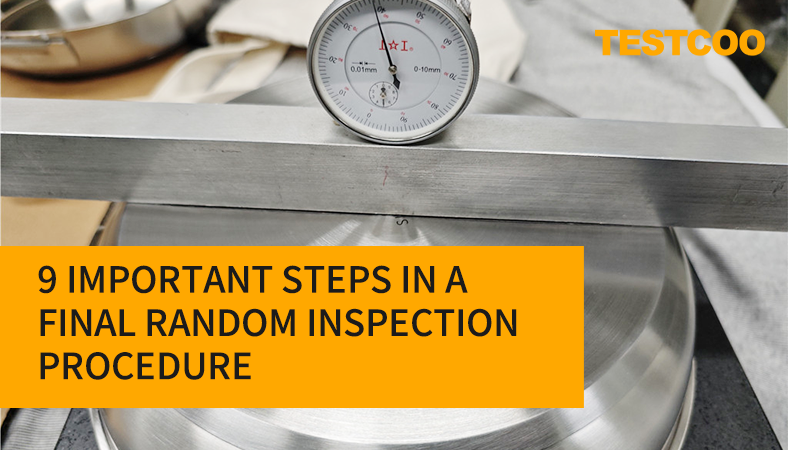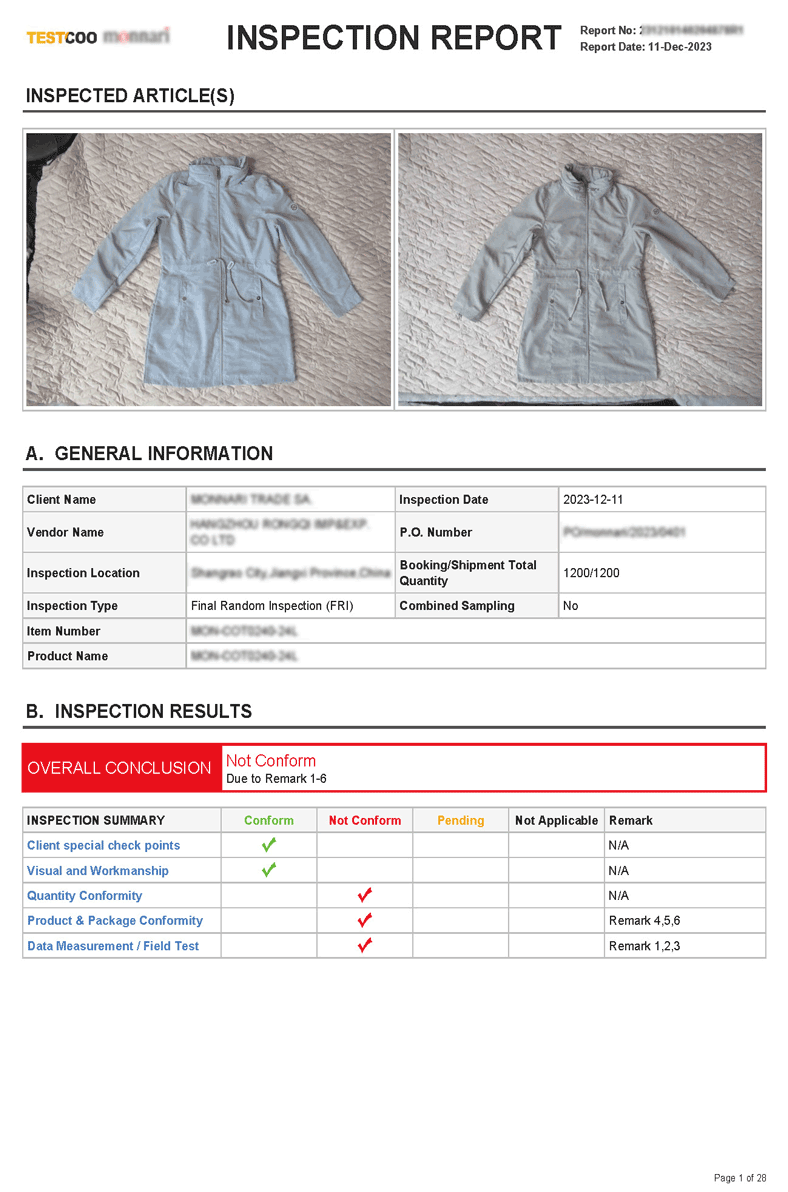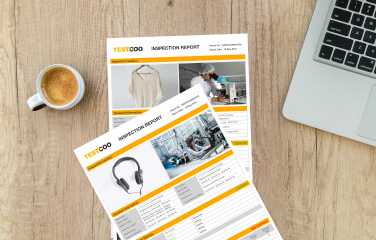
Final Random Inspection (FRI)
Final Random Inspection (FRI) also called Pre-Shipment Inspections (PSI), is reliable by most of the buys. FRI inspections act as a final check to evaluate product quality, packaging, product labeling and carton markings and ensure that items are correctly packed and fit for their intended use. The FRI takes place at the 100% production completed with a minimum of 80% of goods packed and seated in shipping cartons for verification of your purchase specifications.
What is a Final Random Inspection?
Final Random Inspection (FRI) also called Pre-Shipment Inspections (PSI), is reliable by most buys. FRI inspections act as a final check to evaluate product quality, packaging, product labeling, and carton markings and ensure that items are correctly packed and fit for their intended use. The FRI takes place at 100% production completed with a minimum of 80% of goods packed and seated in shipping cartons for verification of your purchase specifications.
It is suitable for nearly all types of consumer goods purchased in Asia. The final inspection report is typically used by the importer to authorize shipment and trigger payment.
Testcoo conduct AQL sampling based on ANSI/ASQC Z1.4 (ISO 2859-1) criteria and produce detailed inspection reports based on a defined AQL.
What are the Benefits of Final Random Inspection?
With your suppliers an ocean away, how can you ensure that the goods you receive meet your expectations for quality? The final random inspection is one of the most common third-party quality inspection services conducted by importers working with manufacturers to verify the quality of your products before they are shipped. The benefits of final random inspection inspections include:
??Ensure that your order was filled successfully before its shipment
??Assured that the goods have met importers specifications
??Reduce in import risk and avoid the product recalls
??Protect the brand image and reputation
??Refuse defective shipment
??Avoid unexpected costs and delays or returns
??Save time and secure your business
??Facilitate rework easily at the manufacturing facility (if required)
What are the Steps in a Final Random Inspection Procedure?

There are 9 important steps in a Final Random Inspection procedure that you should know when shipping to ascertain the quality, quantity, and volumetric size of newly manufactured goods.
? Step 1. Opening Meeting
? Step 2. Quantity Verification
? Step 3. Random Sampling
? Step 4. Product and Package Check
? Step 5. Visual and Workmanship Check
? Step 6. Conformity Verification
? Step 7. Function and Safety Test
? Step 8. Close Meeting
? Step 9. Inspection Report
Discover the more details: 9 Important Steps in a Pre-Shipment Inspection Procedure
What is checked during a final random inspection?
Using a statistical method used by industry standards, we will sample products to verify:
??Quantity produced (shipment quantity and packed)
??Labeling and marking
??Packing (product spec, PO, artwork, accessories)
??Visual appearance (product appearance, workmanship)
??Product specifications (weight, appearance, size, colors)
??All possible functions and possible on-site tests (safety, printing, criteria, etc.)
??Client special checkpoints

DOWNLOAD A QUALITY INSPECTION SAMPLE REPORT
TESTCOO detailed quality inspection reports and continuous support help you improve processes, take corrective actions, and maintain quality.
Four issues can trigger the failure of the inspection report
Usually, four issues can trigger the failure of the inspection, and potentially the refusal of the shipment by the purchaser:
1. Beyond the AQL limit
Based on the sampling plan, the inspector selects a predefined number of products at random. One by one being checked counts the number of defects, which are compared to the AQL limits, beyond the AQL limit
2. Non-compliance with local regulations
Missing country-specific labels & markings for specific products. The types of electrical safety testing required to depend on the type of product as well as the destination market. For example, the CE mark is recognized worldwide and indicates conformity with health, safety, and environmental protection standards for products sold within the European Economic Area (EEA).
3. Missing or Failing for Safety Testing
Electrical and electronic products must be tested to ensure they comply with a wide range of safety regulations before they can be certified and labeled. If the high voltage test, leakage current test, insulation resistance test, and ground continuity test are missed or failed, the importers will receive a failure report.
4. Quality Inconformity
The type and quantity not conforming to the order requirements result in a failure report to importers. Clients reject the goods or consult with the factory whether to accept the goods with concession.
Ready to get started on finding your reliable third-party quality inspection agency?
Click here to discuss and get a quote on final random inspection
The final random inspection aims to visual check on all the relevant aspects of the product: quantity, components, assembly, aesthetics, function, size, labeling, packaging, and other required parameters.
Quality inspection checks for quality and identifies ways to minimize manufacturing costs, reduce scrap losses and mitigate causes of defective work. Learn more:?What is Quality Inspection? A Complete Guide
???????TESTCOO will ensure that your products be safe, quality, and in compliance with local regulations. A full and detailed inspection report, together with a photographic record within 24 hours of the inspection allows you to see the work undertaken. We have a global network of inspectors and can arrange your inspection within 24 hours of receiving your request.

















